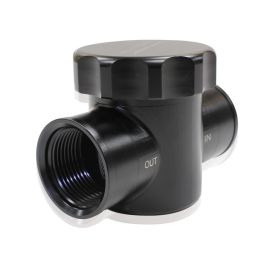I had "creeping heat" on my former daily car. Even with a 3-row Modine radiator. It had been in the car for about 3 years, so it had some accumulation in the bottom of it (a cross-flow radiator). Got another new one. Same issue. I got was getting frustrated as it would slowly increase the temp on the gauge at 70mph, even with the new 3-row radiator. The car had a factory flex fan form it OEM. Got a new one of those, thinking the blades were feathering too quickly (2000rpm cruise), no change. I finally configured an OEM-based fan clutch and fan and that solved everything. But I also know that your car should already have a clutch fan on it. I was using a 180 degree F thermostat, as I had for many years.
In theory, as long as the engine does not clatter, or trace rattle on medium acceleration, the timing is probably good enough, BUT that does not also mean the air/fuel mixture is not too lean, or heading in that direction. Lean mixtures run hotter than richer mixtures. If the carb is OEM, it's probably calibrated on the lean side of things for emissions purposes, yet the ceramic on the spark plugs should be a light tan in color to a non-chalky white. Chalky white means "too lean".
There are some realities about cooling system flushes. One is that a pure water flush can be the best way to go as any flush using a chemical to loosen rust/scale from the block's coolant passages can well loosen/dissolve scale which has deteriorated the "freeze plugs" in the cyl block and cyl heads, which leaves a thinner thickness of those sealing plugs in the process, which can lead to them needing replacement sooner than later. Not to forget about the heater core.
The real accumulation of gunk in the cooling system will be at its lowest point, which is the back of the cyl block. Some of it might require mechanical removal or prodding to get it removed. Which also means that all of the freeze plugs will need to be removed to get to it and flush it out. So, if the freeze plug(s) starts to seep, plan on this course of action. In another forum, some posters complained of a nagging "heat" problem, but that problem vanished when they replaced the freeze plugs and cleaned the coolant passages they seal, then after a final water flush, refilled the system with a quality coolant/water mix. So, with that prior knowledge, doing that messy situation might well be where you end up.
One way to possibly gauge the situation, as to restrictions in flow, would be to get an IR heat gun and check the sides of the block for temperature variations with the engine running. Hotter temps can be where the accumulation in the coolant passages is greatest. With that information, you can proceed from there as desired.
In the mean time, do some research on radiators, their costs, and "fins/inch" specs on their radiator cores. There apparently are some differences, even for similar types of the newer aluminum radiators. Personally, I like the composite aluminum radiators, but none are offered for Chrysler products, just GM products (at significantly lower prices!!). So that leaves us the option of either the aftermarket aluminum radiators or the copper radiators with their lead-soldered tanks AND higher prices. The thing I do not like about the welded-together aftermarket aluminum radiators is that when they might become clogged with time and such, they become a big beer can of sorts. BTAIM
I understand the funding issues. Been there myself. So do ensure that all of the rubber sheeting is one the car to make sure that all air goes through the condenser and radiator rather than around it. Chryslers were usually better about that than GM cars, which means there should be a rubber flap on the bottom front area of the hood to seal the air from going over the radiator.
If off-idle response is important to you, you might try using an intake manifold vac source for the vac advance on the distributor. Not changing the base idle timing, just the vac source. This will effectively put more advance at base idle, which means the hot base idle speed and mixture will need to be adjusted to factory specs with the vac advance line plugged. Try that and see how it goes. If the engine clatters on acceleration, change it back to ported. After the car is rolling down the road, the total advance would be the same either way.
In one respect, 210 degrees F at cruise is not too hot, but past about 240 degrees F, THEN I'd start to get concerned. Even with a 180 degrees F thermostat. So, nothing really pressing about having to do more that might cost money at this time. Even if things might be delayed for 6 months or so.
Enjoy!
CBODY67

















